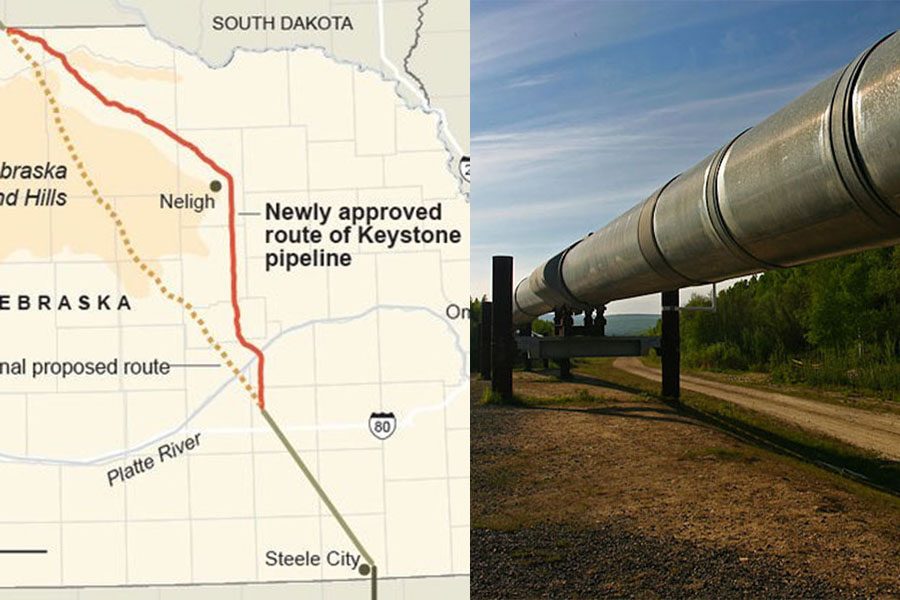Keystone XL Pipeline Route Approved
On Monday, November 20, 2017, the Nebraska State Agency held a meeting discussing the Keystone XL pipeline expansion. The expansion was first introduced in 2008, then hearings started in 2009 to further discuss the details.
During the meeting, officials discussed the proposed pipeline route through Nebraska. This route would connect Hardisty, Canada, to Steele City, Nebraska, and eventually meet up with another existing TransCanada pipeline in the area. Once completed, all of the surrounding pipelines owned by the same company would be connected which would lead to an increase in energy availability nationwide thanks to the 830,000 barrels of oil that could be transported daily.
The Nebraska’s State Commision Services voted in favor of the pipeline expansion 3 to 2, but that did not stop the locals who are affected by the placement of the pipeline from reviving old controversies such as: environmental issues, the loss of land, and worries about their own wellbeing.
The installment of the Keystone XL pipeline has seen an increase in controversy in the past year due to the 2016 controversy over the Dakota Access line. Since the Keystone XL pipeline’s first introduction in 2008, the landowners along the route have not been quiet in their protests of the pipeline. They have been voicing their displeasure from the start by stating that they don’t want a pipe running through their land when it could leak and ruin the surrounding environment.
TransCanada, the pipeline developers, have fought back stating that the pipeline will not affect the environment and that it will be the “safest” pipeline ever built. They have mentioned during many interviews that the pipeline will improve oil flow and it will do it with only a possibility of two major leaks in each state over the 50 year possible life span of the pipe. Dr. John Stansbury, a University of Nebraska Professor, stated that “a more realistic assessment is 91 significant spills over the pipeline’s operational lifetime.”
The arguments have gone back and forth over the years, but three days prior to the meeting on November 20, the Keystone XL Pipeline leaked over 210,000 gallons of oil three miles southeast of Amherst, South Dakota. The crews shut down the pipeline as soon as the leak was discovered and TransCanada has since then released a statement that said the environment would not be negatively affected. Environmental politicians, groups, and citizens have claimed otherwise and have not stopped fighting back. After the spill and protests, the route was still approved causing an uproar that has yet to settle down.
TransCanada has not only been facing backlash from the public, but they have had great deal of problems getting their plans approved by the states and government.
Since the plan’s introduction about ten years ago, TransCanada has proposed multiple different routes they prefer, but the route that was recently approved by Nebraska was not one of those. The approved route runs through 275 different pieces of land and runs a significant distance longer than the original route. This sets the company back due to some challenges that could come with the construction and if they choose to go through with the expansion, they will need to get the appropriate permission from the landowners to continue on the pipeline. The past few days, there have been comments and concerns released by TransCanada, environmentalists, and locals stating their concerns.
It is still unconfirmed if TransCanada will continue with the construction, but activists have already made it clear that if the construction continues, they will retaliate.

Hey! My name is Sharia Williamson. I am a seventeen year old student here at Alliance High School, and the senior editor, for the SPUD.
After I graduate...












